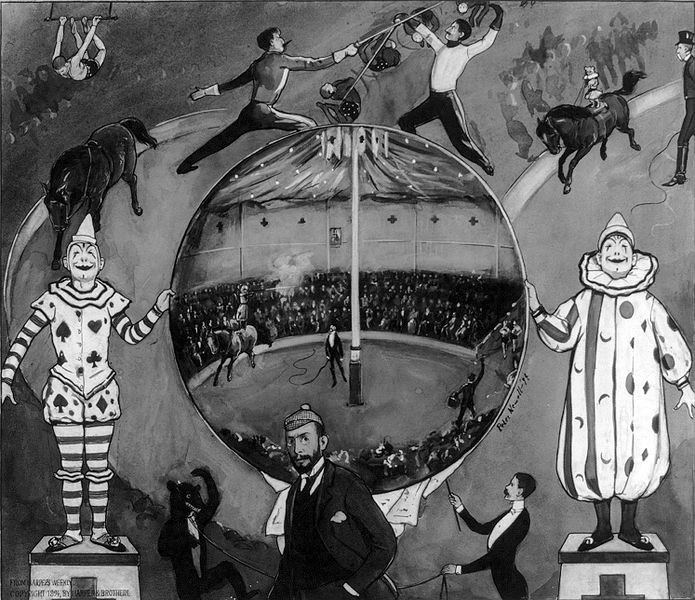Blitz Writing: Writing When There is No Time
This time of year, many of my friends start looking for summer shares, beach houses, and too-good-to-be-true getaways. While they litter Pinterest with snapshots of cozy cottages within walking distance of the ocean, I drift away on a different flight of fancy: writing retreats and residencies. I pour over the websites and ads in writing magazines, like a teenaged male with his first copy of Playboy. My fantasy is not a bungalow with a view or a hot coed who likes sunsets—it is the time and space to write.
I live in a world where there is never enough time—my alarm goes off most days and I hit the ground at a dead sprint. This particular semester I’m teaching nine courses with over two hundred students. My husband and I have two young children and a growing menagerie. (And sometimes like to spend time together that doesn’t involve watching Dinosaur Train for the ten thousandth time, too.)
In no way am I lamenting my choices; I love my life. However, until I get my hands on a Delorean or a Time Turner, writing often comes in dead last on the priority list.
Last July I decided to overcome my graphobibliophobia and begin my first novel. As summer languished, I found the time to go through my rituals and write when I felt like it. Once school hit, though, that time was tossed aside like last year’s sunscreen. The scarce minutes I did have for writing were given over to other projects with more pressing deadlines. My novel lapsed into limbo. In late December, while fantasizing about a week at a writer’s retreat in Maine, I came to the realization that my desire for a writing escape was a castle in the air. I might want it, but right now it just can’t happen. I have to be a writer in the life I have, not in the life I want.
January saw the debut of my new approach, which I call the Blitz Writing. It’s not pretty or romantic, but for those of us who have to eat standing up (when we remember to eat), it makes time for writing even when there is none.
Ditch the Rituals. Writing rituals are an artform. I love reading about them and I enjoy luxuriating in my own. But the Blitz has no time for rituals. Get in and out. Sit down and starting typing. Don’t cast your rituals aside altogether; instead, reserve them for the days when you do have more time.
Set a Ridiculously Low Daily Requirement. My one goal in setting up the Blitz was to write something on my novel every day. That meant I had to look at my life and schedule in a realistic way. Some days I arrive home after 7 p.m. to kids, animals, and a spouse who deserve my attention. A low word count means that I write something on even those days; some nights I sit, brushing my teeth with one hand while the other plugs in two hundred words exactly, my daily target.
Two hundred words sounds like a pittance, right? Mathematically, though, that’s seventy-three thousand words a year. Besides, the truth is that most weekdays I log around five hundred words, and Saturday and Sunday may garner upwards of two thousand. (For my own purposes, I try to put off editing until my long writing sessions on Saturday mornings, but I have given over time to editing during the Blitz, making sure that even if I delete an entire passage, the word count still goes up.)
Learn to Lock In and Tune Out. One part of my writer retreat fantasy is silence coupled with a lack of interruptions. In the real world, even when my kids aren’t home, my life is fraught with interruptions. Some of them external (our cat likes use the keyboard as a kitty chaise lounge); others are internal (What did Entertainment Weekly think about the finale of American Horror Story: Coven?). My success in the Blitz is due in part to sitting down, focusing on the words, and tuning out the world around me. Because I follow rule number two, on those days when kitty just can’t be ignored or my kids are blasting “Proud Mary” on repeat, I am still able to glean some writing time with a short but intense burst of concentration.
Find a High Traffic Writing Space. Whether longing for a Batcave level of seclusion or the squashy armchairs of the Gryffindor common room, most writers want a space to call their own. My writing space used to be in our upstairs loft, away from the rooms where we spend time. The problem with that is it requires separating from my family and our daily lives to work. Thus my desk, bookshelf, and chair have been relocated to the back corner of our dining room. From there, I am still not in the midst of the chaos, but I can referee a wild game of Candyland in the connected living room. Not only is the location easy to access, I can slip into the space without it feeling like I am detaching from everything else.
Keep a Mise en Place. Reality television has taught me many important lessons, including the value of a well-prepped Mise en Place (the cooking term that means “putting in place”). Much of my writing time was previously wasted lollygagging looking for lip balm or my copy of Elements of Style or my earbuds or a computer file. Now my desk drawer has its own tube of Pomegranate Acai Shea Lip Butter, my earbuds are already plugged in to my computer, the bookshelf next to my desk has all the books I might possibly want to use, and the files I am currently working on are icons on the desktop. When I sit down to write, I am able to start typing immediately, no messing about.
Go Big with Writer Hacks. I have no qualms in professing my deep love of Hiveword, a novel organizing website that I use for all my characters, plots, and stories. It’s free and user friendly—I love it times a million. However, when I’m Blitzing, I don’t have the time to click through a bunch of character links to remember what name I gave a random character’s mother. So I stole an idea from Benjamin Percy‘s recent article in Poets & Writers where he talks about taping up giant paper snatched from his kids’ Melissa & Doug easels to sketch his characters.
A visit to my local office supply store armed me with different colored sharpies, my own giant writing pads ($6 for two!), note cards, Post Its, and tape. The walls of my writing space have a massive color coded character list, location list, and timeline. It’s reference at a glance so my minutes can be dedicated to writing and not trying to remember what street a character lives on.

Avoid the Rabbit Holes. The internet is a smorgasbord of free writerly information and advice; you always want to read the new article on Ploughshares or the latest piece in The Atlantic. And you should, as it is an important part of being a writer. Where this gets sticky is when you fall down the reading rabbit hole.
Instead of letting yourself be led astray, put aside a specific time in your schedule for this kind of reading. Print out the articles, bookmark them, or email them to yourself and go back when you have a few hours to spare. I try to do this once a week by dedicating an hour to an hour and a half just to catching up on articles, magazines, blogs, and journals, both in hard and digital formats. Keep a folder of the ones that are of particular use as part of your Mise en Place. That makes them accessible for inspiration and troubleshooting without the temptation of rabbit holes.
My Blitz Writing routine is still developing, but even these minor adjustments in my habits and attitude have made this past month the most productive I’ve had since grad school.
So now it’s your turn, readers. What are your Blitz Writing tips?


